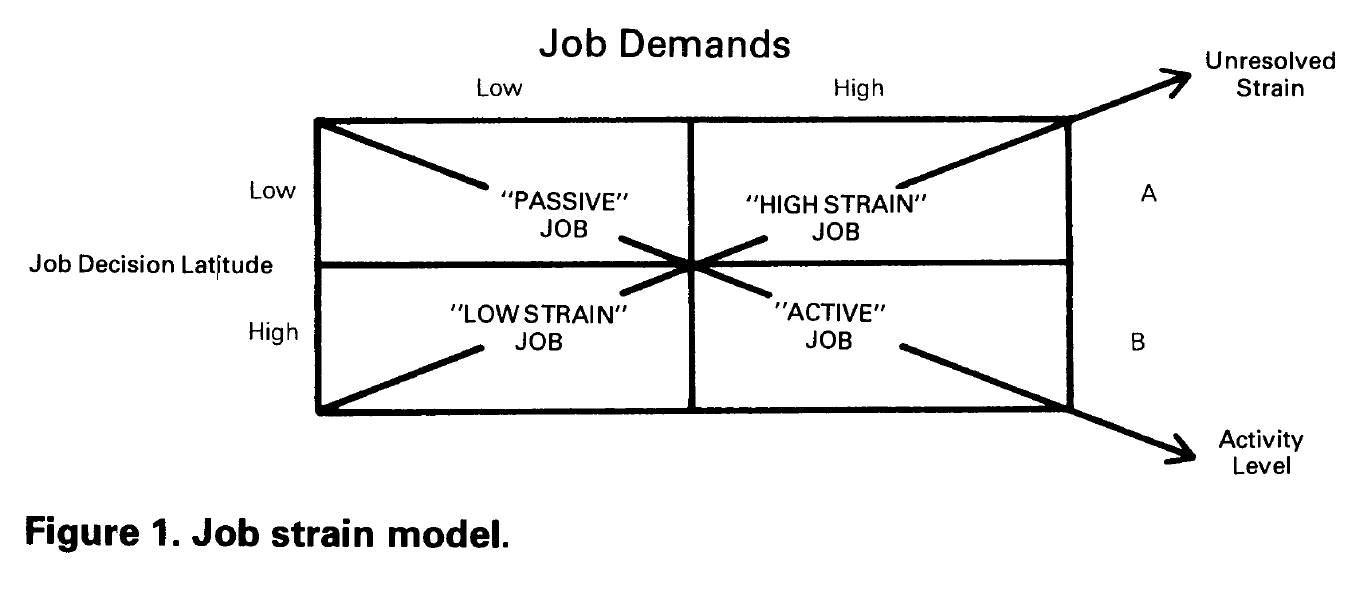Karasek 1979 - Job Demands, Job Decision Latitude, and Mental Strain - Implications for Job Redesign
Karasek Jr, R. A. (1979). Job demands, job decision latitude, and mental strain: Implications for job redesign. Administrative science quarterly, 285-308.
Interesting to note that the composite construct of job strain was able to explain inconsistencies in job demand research and job decision latitude research, because they hadn’t been jointly researched and compared. This is a good theoretical paper, even better because of its corroborating empirical results!
Summary
Job strain (also called mental strain) is a composite construct that combines job demands and job decision latitude. Job demands consist of workplace stressors regarding tasks that need to be accomplished by an employee. Overload occurs “when the environmental situation poses demands which exceed the individual’s capabilities for meeting them.” This is similar to psychological definitions for stress, which occurs when demands are made on a person who does not have (or perceives themselves as not having) the resources to accomplish those demands. Job decision latitude refers to the amount of control or discretion an employee has over completing their work. High job strain is caused by the combination of low decision latitude and high job demands.
In the preceding 2x2 matrix, holding job decision latitude constant, increasing job demands will result in increased strain. High job decision latitude and high job demands leads to increased competency as workers are given leeway to experiment with demand fulfillment techniques. These jobs, called “active” jobs, also produce the most satisfaction. Low job decision latitude and low job demands leads to reduced activity and increased passivity, or “reduction in general problem-solving activity.” The model is confirmed across 2 large-scale data sets, one of which is longitudinal.
Application
Assign people tasks, but let them choose the best way to accomplish those tasks. Inherent in this decision should be the realization that this would take trial and error (build in some slack for mistakes). Additionally, as a line of future research, it’d be interesting to do similar research regarding self-determination theory.
